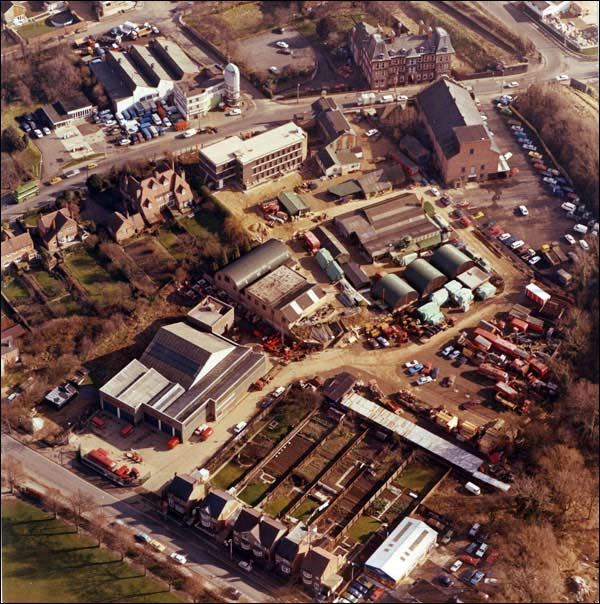|
|||
| Northamptonshire & Bedfordshire Life – August 1979 |
|||
|
Rushden
A look at some of the places, people and events which have shaped present-day Rushden. |
|||
|
|
|||
|
"There's something about the town" said Mr. Michael Wilson, Rector of Rushden. "There's certainly a terrific sense of community here". Turning back from the gateway to St. Mary's Church, to look across the ring road and down the High Street, it is obvious that the special appeal of the town is not primarily in visual terms. Yet, despite its lack of architecture to compete with the mellow proliferation of local stone buildings in nearby Higham Ferrers, the Rushden townscape has a certain unpretentious interest. It is to a great storm in 1771 and the ensuing fire that local residents and businesspeople owed their freedom to experiment in a modest way with a mix of styles from "spa" to Regency, with the more solid red-brick still predominating. Another important factor in what was the speedy transition of Rushden from turn-of-the-century small village to its present position as the largest town in the East Northamptonshire District was the growth of the boot and shoe trade in the area. It is said that the industry's importance in this particular part of the East Midlands began with the need to supply the Army garrison at Northampton with boots. In the early years of the last century, needless to say, this was a cottage industry, and even within living memory "outwork" was done on some of the more expensive and exclusive footwear. Despite the initial impetus of the military needs, the industry would not have become so much a part of the area without other factors. These, in the form of cattle to provide the hides, oak trees to facilitate the tanning and the right quality of local water brought Rushden to a peak when over fifty per cent of its working population were employed in some eighty-two shoe factories. Now, due to mergers and other factors, there are less than twenty different firms, though the town still exports more men's shoes than any other in the country.
John White Footwear with two factories is one of the largest employers and there is a modern tradition of manufacturing safety footwear. Not surprisingly, the County Boot and Shoe College is located in Rushden, as are companies associated with the trade and its raw materials, as well as a mixture of other light industries including various branches of engineering, containers, clothing and sand and gravel.
Returning to the modern building idiom, Marriotts' present offices, opened in 1975 by the then Lord Mayor of London, are partly on the site of a farmhouse which was the home of the firm's founder. Mr Dickens, one of the present employees, can remember when the Marriotts ran the farm and sold milk locally. Not many towns can claim to have had a farm in their High Street within such recent times.
Note: This is now the site of Asda Store.
|
|||
|
|
|||
